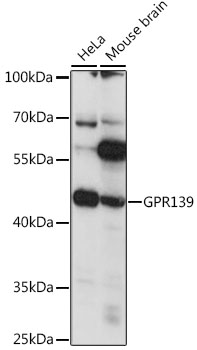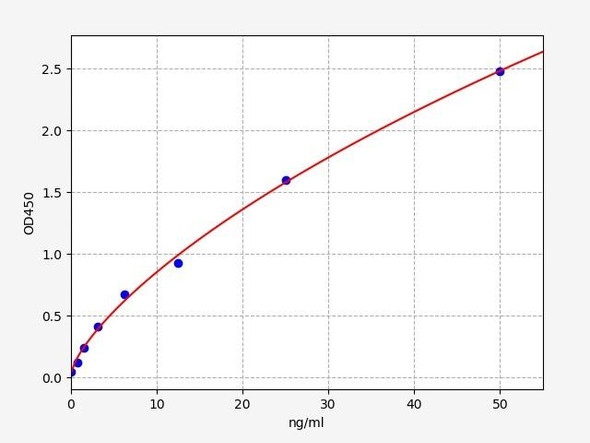Cell Biology Antibodies 6
Anti-GPR139 Antibody (CAB15946)
- SKU:
- CAB15946
- Product Type:
- Antibody
- Reactivity:
- Human
- Reactivity:
- Mouse
- Host Species:
- Rabbit
- Isotype:
- IgG
- Antibody Type:
- Polyclonal Antibody
- Research Area:
- Cell Biology
Description
| Antibody Name: | Anti-GPR139 Antibody |
| Antibody SKU: | CAB15946 |
| Antibody Size: | 20uL, 50uL, 100uL |
| Application: | WB |
| Reactivity: | Human, Mouse |
| Host Species: | Rabbit |
| Immunogen: | Recombinant protein of human GPR139 |
| Application: | WB |
| Recommended Dilution: | WB 1:500 - 1:2000 |
| Reactivity: | Human, Mouse |
| Positive Samples: | HeLa, Mouse brain |
| Immunogen: | Recombinant protein of human GPR139 |
| Purification Method: | Affinity purification |
| Storage Buffer: | Store at -20'C. Avoid freeze / thaw cycles. Buffer: PBS with 0.02% sodium azide, 50% glycerol, pH7.3. |
| Isotype: | IgG |
| Sequence: | Email for sequence |
| Gene ID: | 124274 |
| Uniprot: | Q6DWJ6 |
| Cellular Location: | Cell membrane, Multi-pass membrane protein |
| Calculated MW: | 40kDa |
| Observed MW: | 45kDa |
| Synonyms: | GPR139, GPRg1, PGR3 |
| Background: | This gene encodes a member of the rhodopsin family of G-protein-coupled receptors. The encoded protein is almost exclusively expressed in the central nervous system. L-tryptophan and L-phenylalanine may act as the physiologic ligands of the encoded protein. Alternative splicing results in multiple transcript variants. |
| UniProt Protein Function: | GPR139: Orphan receptor. Seems to act through a G(q/11)-mediated pathway. Belongs to the G-protein coupled receptor 1 family. |
| UniProt Protein Details: | Protein type:GPCR, family 1; Receptor, GPCR; Membrane protein, integral; Membrane protein, multi-pass Chromosomal Location of Human Ortholog: 16p12.3 Cellular Component: integral to membrane; plasma membrane Molecular Function:protein dimerization activity; neuropeptide receptor activity Biological Process: G-protein coupled receptor protein signaling pathway; neuropeptide signaling pathway; G-protein signaling, coupled to IP3 second messenger (phospholipase C activating) |
| UniProt Code: | Q6DWJ6 |
| NCBI GenInfo Identifier: | 50897278 |
| NCBI Gene ID: | 124274 |
| NCBI Accession: | NP_001002911.1 |
| UniProt Secondary Accession: | Q6DWJ6,Q86SP2, Q8TDU8, A8K5R9, |
| UniProt Related Accession: | Q6DWJ6 |
| Molecular Weight: | 40,679 Da |
| NCBI Full Name: | probable G-protein coupled receptor 139 |
| NCBI Synonym Full Names: | G protein-coupled receptor 139 |
| NCBI Official Symbol: | GPR139 |
| NCBI Official Synonym Symbols: | PGR3; GPRg1 |
| NCBI Protein Information: | probable G-protein coupled receptor 139; G protein-coupled receptor PGR3; G-protein-coupled receptor PGR3; g(q)-coupled orphan receptor GPRg1 |
| UniProt Protein Name: | Probable G-protein coupled receptor 139 |
| UniProt Synonym Protein Names: | G(q)-coupled orphan receptor GPRg1; G-protein-coupled receptor PGR3 |
| Protein Family: | Probable G-protein coupled receptor |
| UniProt Gene Name: | GPR139 |
| UniProt Entry Name: | GP139_HUMAN |
View AllClose







